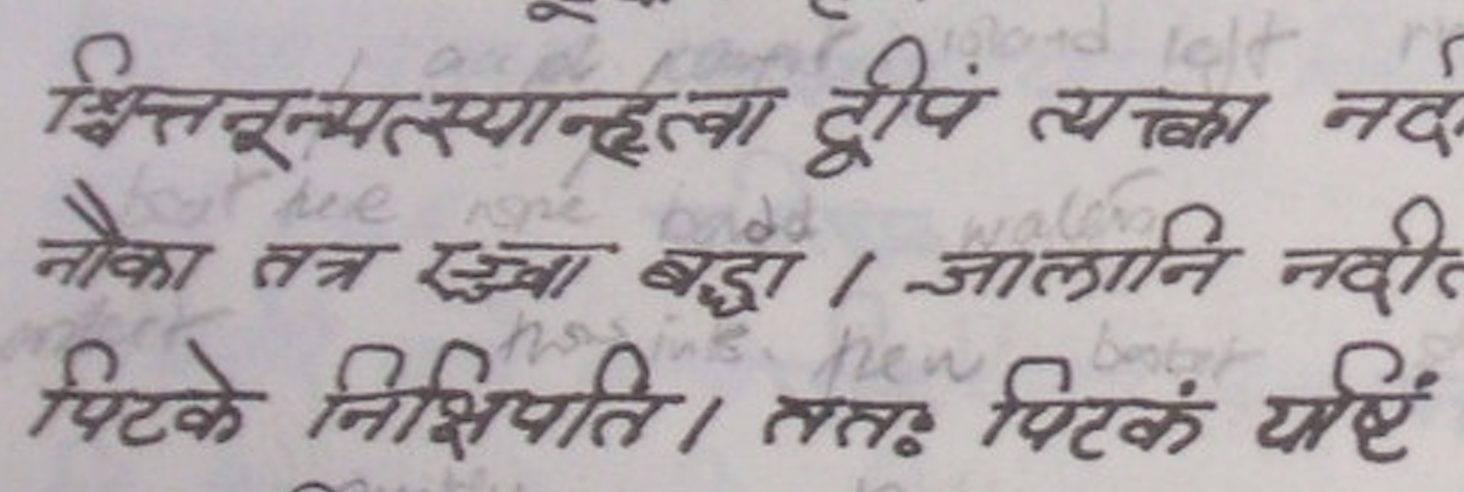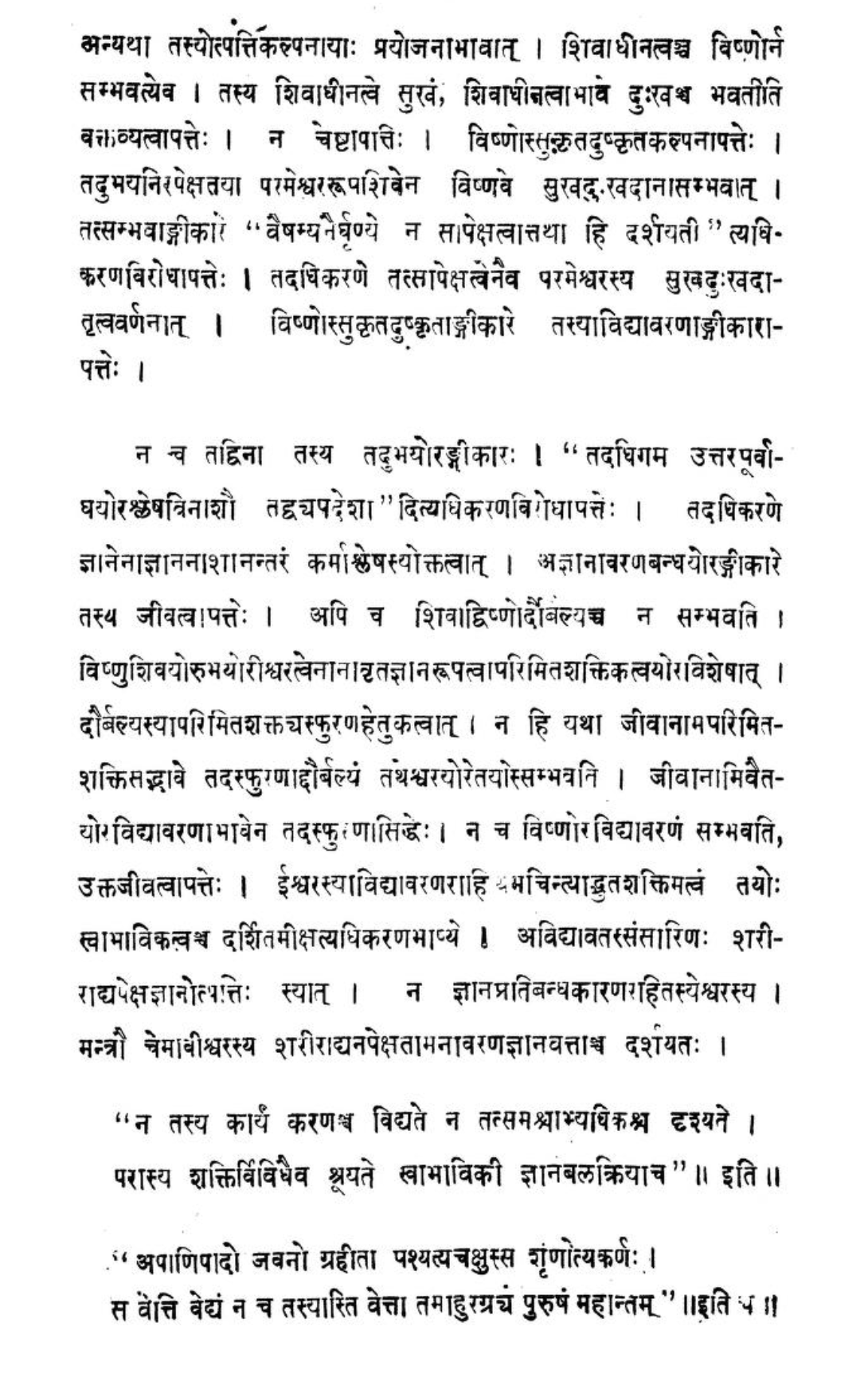Sanskrit
Sanskrit is the classical language of Indian and the liturgical language of Hinduism, Buddhism, and Jainism. It is also one of the 22 official languages of India. The name Sanskrit means ‘refined’, ‘consecrated’ and ‘sanctified’. It has always been regarded as the ‘high’ language and used mainly for religious and scientific discourse.
Vedic Sanskrit, the pre-Classical form of the language and the liturgical language of the Vedic religion, is one of the earliest attested members of the Indo-European language family. The oldest known text in Sanskrit, the Rigveda, a collection of over a thousand Hindu hymns, composed during the 2nd millenium BC.
Today Sanskrit is used mainly in Hindu religious rituals as a ceremonial language for hymns and mantras. Efforts are also being made to revive Sanskrit as an everyday spoken language in the village of Mattur near Shimoga in Karnataka. A modern form of Sanskrit is one of the 17 official home languages in India.
Since the late 19th century, Sanskrit has been written mostly with the Devanāgarī alphabet. However it has also been written with all the other alphabets of India, except Gurmukhi and Tamil, and with other alphabets such as Thai and Tibetan. The Grantha, Sharda and Siddham alphabets are used only for Sanskrit.
Since the late 18th century, Sanskrit has also been written with the Latin alphabet. The most commonly used system is the International Alphabet of Sanskrit Transliteration (IAST), which has been the standard for academic work since 1912.
Number of speakers: 24,821 via: Census 2011
ISO 639-3 Language Code: san
More Information Online
Omniglot
OLAC
PLS
Glottolog
ScriptSource
Vedic
Examples
Typeset Text
Universal Declaration of Human Rights: Sanskrit
मानवाधिकाराणां जागत-अभिघोषणायाः पंचाशत्तमा वर्षपूर्तिः।
यत्र जगति शान्ति-न्याय-स्वातन्त्र्याणां आधारः मानव-परिवारस्य सर्वेषामपि सदस्यानां साम्यानां अखण्डितानाञ्च अधिकाराणां, पारम्परिक-गौरवस्य चाभिज्ञाने स्यात्,यत्र मानवाधिकाराणां अवमानेन अनादरेण च कार्याणि दुर्दान्तरूपेण परिणमितानि, यैः मानवीय-चेतना विक्षोभिता, अपि च,सामान्य-जनानां उच्चतमाकांक्षाः अभिघोषिताः स्युः, एवं हि नूतनविश्वारंभेण, मानवाः अभिव्यक्तेः स्वातन्त्र्यमनुभवितुं शक्ष्यन्ति, निर्भयाश्च भवितारः, यत्र चैतत् अनिवार्यम् यदि शोषणात्याचारान् विरुध्य अन्तिम-प्रयासत्वेन मनुष्यः, प्रयासानुष्ठानार्थं नैव विवशीक्रियते चेत्तदा, मानवाधिकाराः विधि-नियमेन संरक्षणीयाः,यत्र च राष्ट्रेषु परस्परं सख्य-सम्बन्धानां विकासजातं समुन्नेतुं परमावश्यकं स्यात्,यत्र मौलिकेषु मानवाधिकारेषु संयुक्त-राष्ट्र-संघस्य जनाः घोषणापत्रे स्वीयास्थां दृढ़ीकृतवन्तः, बृहत्तरे च स्वातन्त्र्ये भद्रतरं जीवनस्तरं सामाजिक-प्रगतिं च समुन्नेतुं निर्णीतम्, स्त्री-पुरुषाणां साम्याधिकारेषु मानव-व्यक्तेः गौरवे मूल्ये च निष्ठा दृढ़ीकृता,यत्र, सदस्यदेशाः मौलिक-स्वातन्ञ्याणां मानवाधिकाराणाञ्च परिपालनार्थं वैश्विकादरस्य समुन्नतये च, संयुक्त-राष्ट्र-संघेन संभूय प्रतिश्रुताः स्युः,यत्र स्वीय-प्रतिश्रुतीनां परिपूर्णतायै एतेषां अधिकाराणांस्वातन्त्र्याणां च सामान्यावगमनं महत्तमं महत्त्वाधायि च स्यात्,तदर्थं साम्प्रतम्,महासभा सर्वेषां राष्ट्राणां सर्वेषां च जनानां कृते सामान्योपलब्धि-स्तर-रूपेण मानवाधिकाराणां एनां जागताभिघोषणां अभिघोषयति। समाजस्य प्रत्येकमपि अंगम्, प्रत्येकमपि जनः, मनसि सततं अभिघोषणामेनां निधाय, एतेषां अधिकाराणांस्वातन्त्र्याणां च कृते सम्मानं समुन्नेतुं शिक्षाध्यापनार्थं प्रयतिष्यते, अपि च, स्वीय-क्षेत्राधिकारान्तर्गतं क्षेत्रवास्तव्येषु जनेषु स्वेषु च सदस्यदेशेषु तदीयेषु जनेषु च स्वीय-वैश्विक-प्रभावि-परिपालनाभ्युपगमनानि संरक्षितुं आन्ताराष्ट्रिकाणां राष्ट्रिकाणाञ्च प्रगतिशीलोपायानां च माध्यमेन प्रयतिष्यते।
Images
Particular forms / combinations
Handwriting Sample
 Full Image via: Paul Hunt
Full Image via: Paul Hunt
Typography Sample
 Example of Sanskrit text
via: Internet Archive
Example of Sanskrit text
via: Internet Archive
Text Files
Sanskrit Word Frequency List
via: http://crubadan.org
PDFs
Sanskrit Primer – Sanskrit learners’ book
via: Internet Archive
Sanskrit Subodhini – Sanskrit primer
via: Internet Archive
Second Sanskrit Course – Sanskrit learners’ book
via: Internet Archive
Maharaja Sanskrit College Patrika – Sanskrit magazine
via: Internet Archive
Chandamama – Sanskrit comic book
via: Internet Archive
Vedic
Hymns of the Rig Veda – Vedic texts
via: Google Books
Samveda Samhita – Vedic texts
via: Google Books
Katyayan Grihasutra – Vedic texts
via: Internet Archive
Websites in Sanskrit
http://unicode.org
http://avg-sanskrit.org
http://balramshukla.wordpress.com
http://grammarofsanskrit.wordpress.com
http://kalidasa.blogspot.com
http://maghakavyam.wordpress.com
http://sanskritcentral.com
http://sanskritdocuments.org
http://sa.wikibooks.org
http://www.amrita.in/sanskrit
http://www.chandamama.com
Bibliography / Resources
Whitney, William Dwight. 1997. Sanskrit grammar: including both, the classical language and the older dialects of Veda and Brahmana. Dehli: Motilal Banarsidass. xxv+551pp.
A. A. MacDonell. 1910. Vedic Grammar. (Grundriss der indo-arischen Philologie und Altertumskunde, 1, 4.) Strassburg: Karl J. Trübner. 508pp.
Mayrhofer, Manfred. 1972. Sanskrit grammar. (Alabama linguistic and philological series, 20.) Tuscaloosa: University of Alabama Press. 115pp.
Speyer, Jacob Samuel. 1974. Vedische und Sanskrit-Syntax. (Grundriss der indo-arischen Philologie und Altertumskunde, 1,6.) Strassburg: Trübner. 101pp. (Includes bibliographical references and indexes).
Maurer, Walter Harding. 2001. The sanskrit language: an introductory grammar and reader. Surrey, England: Curzon. (Includes bibliographical references and index. Contents v. 1. Lessons one - thirty-two – v. 2. Appendices, glossary and lexicon).
V. V. Ivanov and V. N. Toporov. 1960. Sanskrit. Moskva: NAUKA. 68pp.
Edgerton, Franklin. 1946. Sanskrit historical phonology: a simplified outline for the use of beginners in Sanskrit. (American Oriental Society: [Journal of the American Oriental Society / Supplement], 5.) Baltimore, MD: American Oriental Society. 31pp.
Prakash Shastri, Ved and Kant Pandey, Shashi. 2002. English-Sanskrit-Hindi Dictionary. Neeta prakashan, New Delhi, India.
Patrick McCartney. 2017. Jhirī: A ‘Sanskrit-speaking’ Village in Madhya Pradesh. Journal of South Asian Languages and Linguistics 4. 167-209.
Burrow, Thomas. 2001. The Sanskrit language. Delhi: Motilal Banarsidass Publ. ix+438pp.
Schäufele, Steven William. 1991. Free word-order syntax: The challenge from Vedic Sanskrit to contempory formal syntactic theory. (Doctoral dissertation, University of Illinois at Urbana-Champaign; 333pp.)
In-Progress/Unresolved Issues
1)
Possibly Windows shaping engine issue: Glyphs $1CE9, $1CEA, $1CEB, $1CEC cannot be anchored or precisely positioned for any combination using GPOS / GSUB: displays separately with circular $25CC


